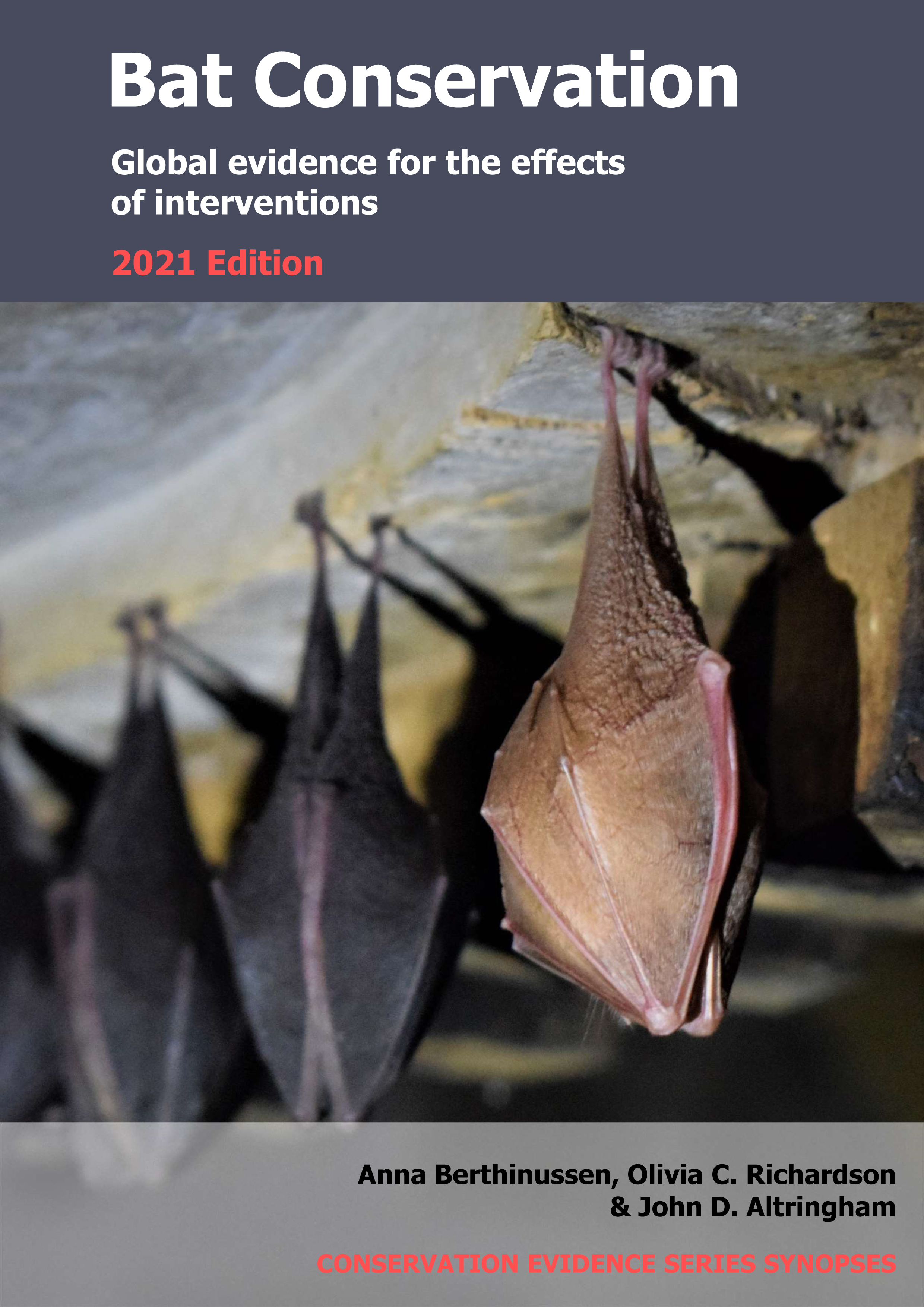Automatically reduce turbine blade rotation when bat activity is high
-
Overall effectiveness category Likely to be beneficial
-
Number of studies: 2
View assessment score
Hide assessment score
How is the evidence assessed?
-
Effectiveness
80% -
Certainty
60% -
Harms
0%
Study locations
Supporting evidence from individual studies
A replicated, paired sites study in 2012 at eight pairs of wind turbines in Germany (Behr et al 2016) found that using automated ‘bat-friendly’ operating systems that reduced turbine blade rotation speed resulted in fewer bat fatalities than at conventionally operated wind turbines. Total bat fatalities and average collision rates were lower at automated turbines (total 2 bat fatalities, 0.01 fatalities/turbine/night) than at conventionally operated turbines (total 21 bat fatalities, 0.06 fatalities/turbine/night). At automated turbines, predictive models identified periods of high fatality risk and low energy yield from bat activity and wind speed data. During these periods, rotor blades were moved parallel to the wind to reduce rotation speed according to a target bat fatality rate (0.012 fatalities/turbine/night). Conventionally operated turbines rotated freely. At each of eight sites, automated and conventional operating modes were alternated weekly between two paired turbines over 14 weeks in July–October 2012. Carcass searches were carried out daily. Carcass counts were corrected to account for searcher efficiency and removal by scavengers. If applied to all turbines, it was estimated that automated operation would result in annual energy losses of 2.1%.
Study and other actions testedA replicated, randomized, controlled study in 2015 at a wind energy facility in an agricultural area of Wisconsin, USA (Hayes et al 2019) found that using automated ‘Smart Curtailment’ operating systems that reduced turbine blade rotation speed resulted in 74–91% fewer fatalities of five bat species compared to conventionally operated turbines. Total fatality estimates were lower at automated turbines than conventionally operated turbines for eastern red bats Lasiurus borealis (automated: 34 fatalities; conventional: 220 fatalities); hoary bats Lasiurus cinereus (automated: 11; conventional: 59); silver-haired bats Lasionycteris noctivagans (automated: 5; conventional: 55); big brown bats Eptesicus fuscus (automated: 8; conventional: 31); and little brown bats Myotis lucifugus (automated: 3; conventional: 35). Twenty turbines were randomly selected (10 operated by automated systems, 10 conventionally operated). At automated turbines, fatality risk was calculated by a predictive model using real-time bat activity and wind speed data every 10 minutes. If fatality risk was high (wind speed <8 m/s and >1 bat call detected in the previous 10 minutes), rotor blades were rotated out of the wind and slowed (to ≤1 rpm) for 30 minutes. Conventionally operated turbines were ‘feathered’ to rotate slowly below a cut-in speed of 3.5 m/s. Daily carcass searches were conducted along transects in plots (80 x 80 m) centred on each of the 20 turbines in July–September 2015. Carcass counts were corrected to account for searcher efficiency and removal by scavengers. Electricity generation was reduced by 90 MWh/turbine at automated turbines during the study period.
Study and other actions tested
Where has this evidence come from?
List of journals searched by synopsis
All the journals searched for all synopses
This Action forms part of the Action Synopsis:
Bat Conservation
Bat Conservation - Published 2021
Update 2020





)_2023.JPG)














